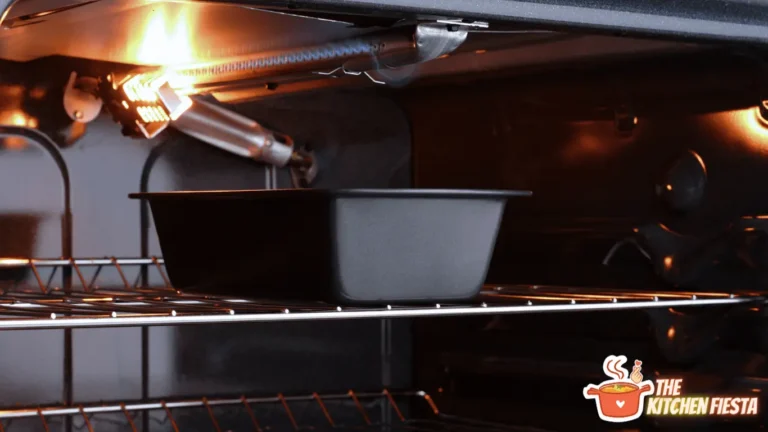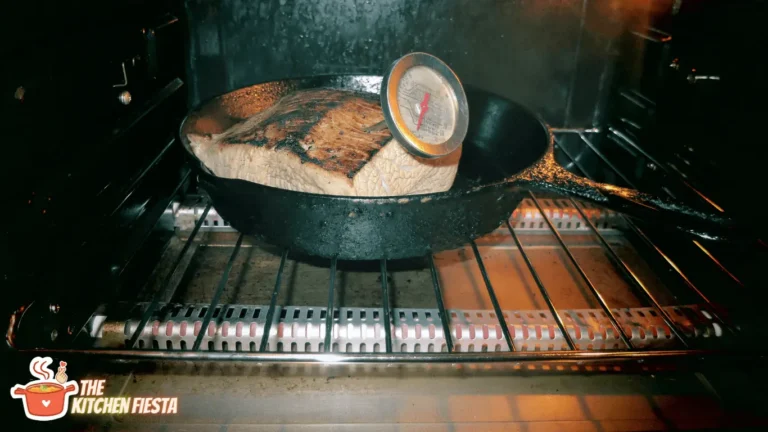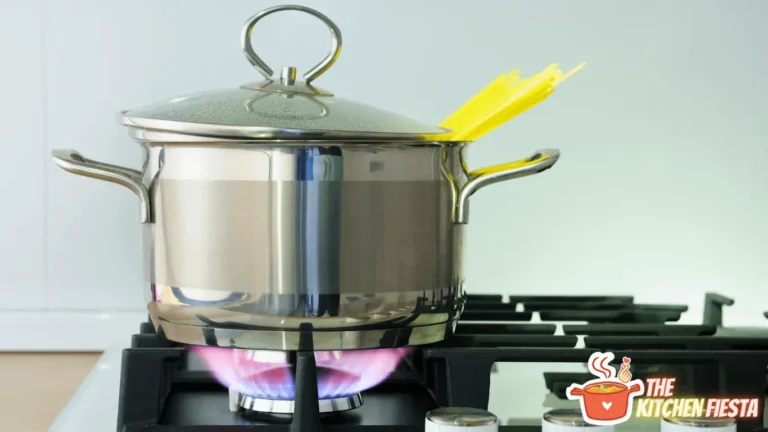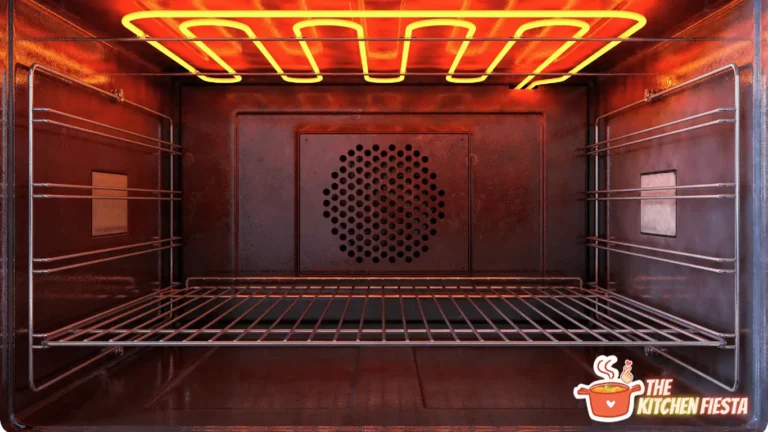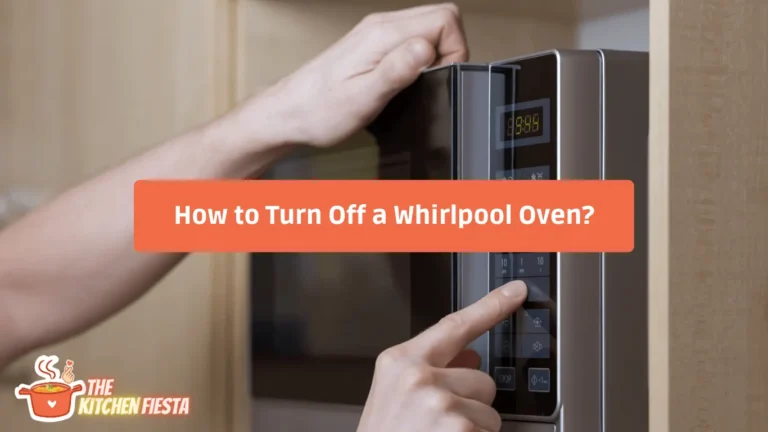Can You Cook a Microwave Meal in the Oven? Everything You Need to Know
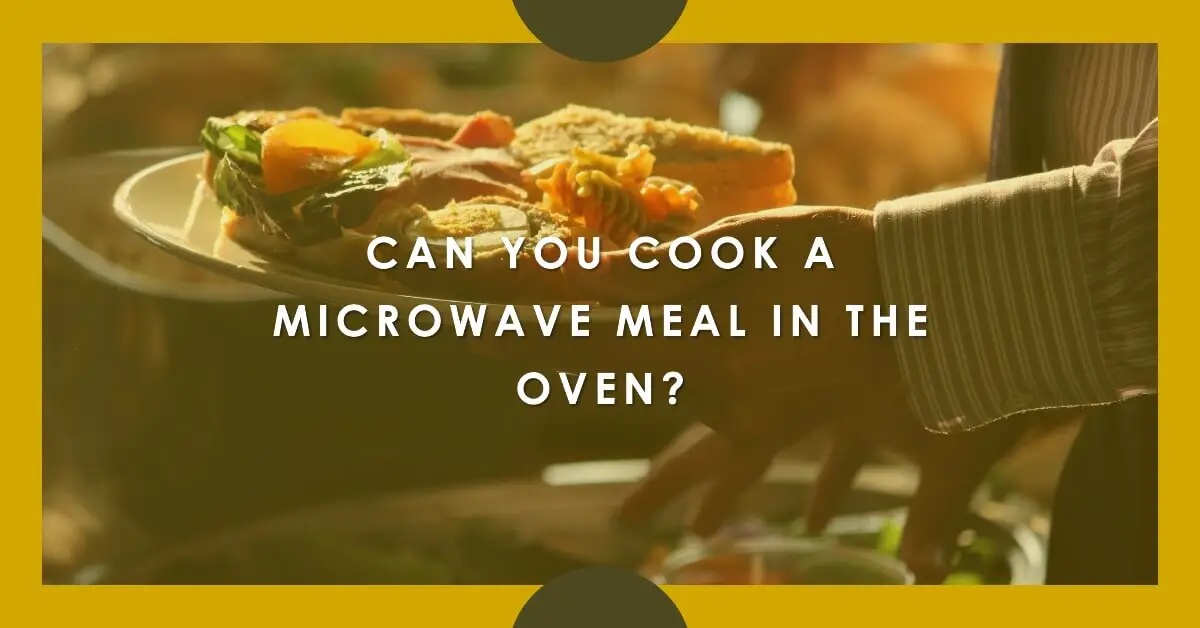
Have you ever been halfway through heating up a microwave meal and had your microwave stop working? Or perhaps you wanted to cook a frozen meal but didn’t have a microwave handy. Whatever the reason, you may have wondered if you can simply stick a microwave meal in the oven instead.
Can you cook a microwave meal in the oven? The short answer is yes, you can cook many microwave meals in a standard oven. However, there are some important factors to consider to ensure food safety and optimal results when cooking a microwave meal without a microwave.
In this comprehensive guide, we’ll cover everything you need to know to successfully cook a microwave meal in the oven, including:
- What are microwave meals and how are they pre-cooked?
- Reasons for cooking a microwave meal in the oven
- How to tell if a meal can be oven-cooked
- Tips for cooking frozen and refrigerated meals
- Cooking instructions by meal type
- How oven cooking affects taste and texture
- Recommended oven temperatures and cook times
- Using oven-safe containers
- Food safety considerations
- The pros and cons of oven “microwaving”
- Alternatives to cooking microwave meals in the oven
- Frequently asked questions
So whether you’re cooking for one and your microwave went kaput, or you need to feed a crowd with a microwave meal and no microwave, this guide will teach you how to make microwave meals without ever pressing that Start button.
What Are Microwave Meals?
First, let’s start with a quick primer on what exactly microwave meals are. Microwave meals are pre-packaged complete meals designed to be cooked or reheated in the microwave. They come in two main categories:
Frozen microwave meals – These are raw or partially cooked meals that require thorough cooking. They are kept frozen until ready to heat. Common frozen meals include TV dinners, pot pies, and frozen entrées like steamable vegetables and microwaveable rice.
Refrigerated microwave meals – These meals are fully cooked and just need reheating. They can be found cooled in the refrigerated section of the grocery store, such as ready-to-eat pasta dishes, steam meals, and heat-and-eat entrees.
Microwave meals offer a quick and convenient solution for lunches, dinners, and solo cooking. They come in disposable packaging or microwavable containers with cooking instructions based on wattage.
But what if your microwave breaks and you still have a freezer full of microwave meals? Let’s look at how you can cook them in the oven instead.
Are Microwave Meals Pre-Cooked or Raw?
An important factor in successfully cooking a microwave meal in the oven is understanding whether it is pre-cooked or contains raw ingredients.
Frozen microwave meals are often partially cooked or include raw meats and vegetables. Manufacturers pre-cook ingredients to help speed up microwave cooking. But frozen meals will still require thorough cooking in the oven to ensure food safety.
On the other hand, refrigerated microwave meals are fully cooked when purchased. They simply need reheating, which the oven does nicely.
Be sure to check the packaging to see if your microwave meal contains raw or cooked ingredients before popping it in the oven. Raw meat and fish especially require careful oven cooking to avoid foodborne illness.
Now let’s look at some of the top reasons for forgoing the microwave and turning to the oven when cooking a microwave meal.
Reasons You Might Want to Cook a Microwave Meal in the Oven
There are a few advantages to using your oven to cook a microwave meal:
- Your microwave stops working – Like any appliance, microwaves can break. Baking or heating up a microwave meal in the oven lets you still enjoy the convenience of a quick pre-packaged meal.
- You need to feed a crowd – Microwaves heat small amounts of food at a time. To quickly cook multiple microwave meals or dishes, the oven can heat large batches evenly.
- You want a crispier texture – The intense heat of a microwave can make some foods soggy. The dry ambient air of an oven can lend a crisper, more appealing texture.
- You don’t have a microwave – Some spaces like dorm rooms, apartments, or offices may not have a microwave available. The oven allows you to cook microwave meals anywhere.
- You want more even heating – Microwaves create hot and cold spots due to uneven penetration. An oven surrounds food with steady ambient heat for uniform doneness.
Now that you know why one might opt for the oven over microwave, let’s go over how to identify which meals can make the switch.
How to Tell if a Microwave Meal Can Be Cooked in the Oven
Not all microwave meals are created equal when it comes to oven suitability. Here are some tips for determining if a specific meal can go from microwave to oven:
- Check the packaging – Microwave-only meals designed for microwave steam cooking may not oven cook well. Look for language like “oven safe” or oven cooking instructions.
- Evaluate ingredients – Raw proteins like chicken, pork, or fish likely require thorough oven cooking. Fully cooked rice, pasta and frozen vegetables may just need reheating.
- Assess moisture content – Meals with a high moisture content won’t oven cook well as steam can’t develop. Drier foods like chicken nuggets or fries do great.
- Consider cookware – Many frozen meals come in microwave-only containers. Look for oven-safe packaging that can withstand baking temps.
- Check for previously microwaved areas – If you already microwaved part of the meal, finish cooking in the microwave if possible as ovens heat differently.
Doing a quick scan of the meal label and contents will tell you if switching cooking methods is doable. Next we’ll cover how to adjust oven temperature, time, and technique when cooking both refrigerated and frozen microwave meals without a microwave.
Tips for Cooking Frozen Microwave Meals in the Oven
Frozen microwave meals usually contain raw ingredients that require thorough cooking. Here are some tips to cook frozen meals in the oven safely:
- Preheat the oven to bake or convection bake at a temperature between 350-425°F. Frozen meals do well with the dry, ambient air.
- Use aluminum foil to cover food to prevent moisture loss, wind up around containers to make oven-safe, or make foil “boats”.
- Add a liquid like broth, water, or sauce to replace microwave steam and prevent drying out.
- Stir periodically to redistribute heat and ensure even cooking, especially in microwavable rice and grains.
- Flip items like frozen burgers, nuggets, and patties halfway through for even browning.
- Adjust cook times since ovens heat more slowly than microwaves. Extend times on package by 50-100% depending on oven temp.
- Check temperatures with a food thermometer to confirm doneness, especially for raw proteins.
With a little trial and error, you’ll get the oven times and temps down for cooking your favorite frozen microwave meals. Next up is how to handle refrigerated ready-to-eat meals.
How to Cook Refrigerated Microwave Meals in the Oven
Since refrigerated microwave meals are already fully cooked, oven heating is simply about thorough reheating. Follow these tips when oven “microwaving” refrigerated meals:
- Use lower oven temps between 250-325°F to gently reheat without overcooking.
- Keep foil or lids on so steam can re-warm meals to a food-safe 165°F temperature.
- Vent plastic film or peel back one corner of the film to allow steam to escape.
- Add a tablespoon of water to pasta, rice, and sauce dishes to restore moisture lost in refrigeration.
- Cook in shorter bursts and check periodically until heated through, about 20-50% of recommended microwave time.
- Let meals stand 2-3 minutes after heating for temperature equilibrium and improved texture.
With a little oven trial and error, you can easily revive refrigerated microwave meals to piping hot perfection. Now let’s look at oven cooking specifics for common microwave meal categories.
Cooking Instructions for Common Microwave Meal Types
Technique and cook times can vary depending on the specific microwave meal category. Here are some oven cooking guidelines for popular meal types:
Frozen Entrees
Frozen entrées like pot pies, steam meals, and pasta-based dishes do well in the oven. Place frozen entrées on an oven-safe pan and cover tightly with foil. Cook at 375°F for 45-60 minutes until filling reaches 165°F. Let stand 2-3 minutes before serving.
Frozen Pizza
Pizza ovens quickly at high heat. Preheat oven to 450°F and place frozen pizza directly on oven rack or pizza stone for crispy crust. Cook 12-18 minutes until cheese is bubbly and bottom crust browns.
Frozen Breakfasts
Breakfast sandwiches and bowls with meat or eggs need thorough oven cooking. Cover with foil and heat at 325°F for 18-25 minutes until egg or meat reaches safe temperature of 165°F.
Refrigerated Soups
Cover and heat chilled soups in oven-safe containers at 300°F for 15-25 minutes, stirring occasionally, until steaming hot. Add water if condensed from refrigeration.
Refrigerated Pasta Dishes
Pasta dishes reheat beautifully in the oven. Cover pasta to retain moisture and cook at 275°F for 8-12 minutes until heated through, then stir before serving.
As you can see, adjustments to time, temperature, and technique make most microwave meals oven-friendly. Now let’s examine how oven cooking affects taste and texture.
How Cooking Microwave Meals in the Oven Affects Texture and Taste
When cooking a microwave meal in the oven instead, you’ll notice some differences in both texture and flavor:
Texture
- Crispier exterior from dry oven heat
- Less soggy results since steam can’t accumulate
- Drier without microwave’s intense hydration
- Denser consistency from slower heat penetration
Flavor
- Deeper, more roasted flavors develop
- Less microwave “taste” from shorter cook time
- More complex and caramelized meat flavors
- More evenly distributed spice and seasoning flavors
Texture and taste outcomes depend on the meal components and oven heating approach. With the right combo of time, temp, and technique, you can achieve delicious results when cooking microwave meals in the oven.
Let’s look at some pro oven cooking tips to further improve the taste, texture, and ease of adapting microwave meals.
Microwave Meal Hacks for Oven Cooking
Here are some top cooking hacks for getting the best results when cooking microwave meals in the oven:
- Elevate meals on a wire rack or foil to allow air circulation and crisping of undersides
- Brush frozen battered foods with oil before cooking for crispier crusts
- Stir halfway through oven cook times to redistribute heat
- Cover meals with foil, then unwrap last 5-10 minutes for crispy edges
- Spritz additional water from a spray bottle for added moisture
- Change up oven heating modes like convection for super fast, even heating
- Slice large frozen meals into smaller portions to speed oven cook times
- Place oven thermometer inside meals to monitor inner temperature
- Set oven timer to remind you to flip, stir, and check doneness
With a few simple oven hacks and technique adjustments, you can easily replicate microwave results when cooking meals in the oven.
But what oven temperatures, times, and tools work best? Let’s explore recommended guidelines next.
Oven Temperature and Cook Times for Microwave Meals
Determining the proper oven settings for microwave meals takes some trial and error. Here are some general guidelines depending on the meal type:
Frozen microwave meals
- Preheat oven to 375-425°F for optimal ambient heat
- Start with 50-100% longer cook times than microwave instructions
- For large dishes like entrees, cook 45-60 minutes
- For foods like nuggets, cook 15-25 until crispy and hot
- Check temperature of meats, reheating until 165°F
Refrigerated microwave meals
- Use oven temps between 250-325°F to avoid overcooking
- Heat for 30-50% of recommended microwave times
- Larger entrees take 15-20 minutes
- Smaller foods like soups reheat in 10 minutes or less
- Check food has reached 165°F minimum before serving
Ideally, use an appliance thermometer placed inside the microwave meal to confirm safe interior temperatures.
Next we’ll go over whether the containers microwave meals come in can go straight into the oven.
Can You Cook Microwave Meals in Oven-Safe Containers?
Microwave meal containers range from disposable plastics to reusable oven-safe designs. Here are some tips for identifying if a container can go from microwave to oven:
- Disposable containers marked microwave-safe only will melt or leach chemicals when oven heated. Transfer food to an oven-safe dish before cooking.
- Reusable plastic microwave containers must be specifically marked as oven-safe to withstand baking temps.
- Paperboard containers may blacken or burn above 400°F. Use foil wraps to protect.
- Most glass and ceramic containers are oven-safe. Verify any plastic lids can tolerate oven heat.
- Never put containers with silver or metal trims or coverings in the oven, which can spark and ignite.
When uncertain if a container is oven-safe, transfer the microwave meal to an oven-safe baking dish or carefully wrap in foil.
For food safety, ensure containers are microwave or oven-safe before cooking.
Food Safety Tips for Cooking Microwave Meals in the Oven
Improper oven cooking of microwave meals introduces potential food safety risks. Here are some tips to avoid foodborne illness:
- Only reheat fully cooked refrigerated meals, avoid undercooking.
- Use a food thermometer to confirm frozen foods reach safe internal temperatures.
- Discard meals kept longer than 2 hours at room temperature after initial microwaving.
- Keep oven temperature below 450°F to prevent exterior burning before interior is cooked through.
- Don’t let aluminum foil directly contact food which can leach into meals.
- Avoid cross-contamination by using clean utensils to remove oven-cooked dishes.
- Check for hot spots that can lead to uneven cooking and raw sections.
Following basic food safety guidelines keeps your oven-cooked microwave meal safe along with delivering optimal texture and taste.
Now that we’ve covered all the ins and outs of the oven cooking process, let’s examine the potential benefits and drawbacks of this unorthodox microwave meal preparation method.
The Benefits of Cooking Microwave Meals in the Oven
Transitioning microwave meals to the oven offers several advantages:
More Appealing Texture – The hot dry air of an oven can give many microwave meals a crisper, more appetizing texture.
Flexibility – Ovens allow you to enjoy microwave meals anywhere, useful if you lack a microwave or need to cook large quantities.
Added Flavor – Longer oven cook times can develop deeper, more complex flavors compared to quick microwaving.
Food Safety – Ovens can thoroughly and evenly heat meals, ensuring raw ingredients like chicken reach safe eating temperatures.
Uses Existing Appliance – You likely already own an oven, making it a convenient backup option compared to purchasing a new microwave.
With a little finesse, oven cooking can transform microwave meals into restaurant-quality dishes using appliances you already own like your trusty oven.
But oven cooking microwave meals does come with a few disadvantages to consider as well.
The Downsides of Cooking Microwave Meals in the Oven
Cooking microwave meals in the oven also has some drawbacks:
Longer Cook Times – Where microwaves reheat meals in minutes, ovens may take up to an hour depending on the dish. Plan ahead.
Learning Curve – Determining the ideal oven settings and cook times for different microwave meals has a learning curve. Be prepared to experiment.
Potential Drying Out – Lack of steam and extended oven times can sometimes dry foods out. Use foil or cook at lower temps.
Inconsistent Results – The open dry heat of ovens cooks less uniformly than quick microwaving. Monitor doneness carefully.
Equipment Needs – You’ll need oven-safe cookware if the microwave meal packaging can’t withstand baking temps.
While doable, oven cooking introduces challenges. For best results, embrace the trial and error process and tweak times and temps as needed.
If interested in other alternatives, here are a few microwave meal hacks that don’t require the oven.
Microwave Meal Alternatives for Oven Cooking
If you find oven cooking challenging, here are a few alternative cooking methods for microwave meals:
- Use a toaster oven, which mimics a full-sized oven in a compact design
- Cook in a skillet or saucepan on the stovetop
- Use a slow cooker to braise frozen meals to tender doneness
- Finish pre-cooked refrigerated meals in an air fryer for quick crisping
- Use an electric burner, hot plate, or induction cooker for stovetop heating
- In a bowl of just-boiled water, create a steam bath to reheat sealed meals
- Use a coffee carafe or dripper to generate steam to reheat food in sealed containers or bags
With some creativity and the right equipment, you can mimic microwave cooking without an oven or microwave. A toaster oven or electric burner allow you to generate ambient dry heat similar to a full oven. For steaming effects, a stovetop with a tight lid or DIY steam bath rehydrates meals without drying them out. And the concentrated heat of an air fryer or slow cooker cooks frozen ingredients while keeping moisture in.
Common questions
Can you cook a frozen microwave meal on a cookie sheet?
Yes, cooking frozen microwave meals directly on a cookie sheet or oven-safe pan works well. Use a rimmed baking sheet for foods with sauce to prevent spills. Line the pan with parchment paper or foil for easy cleanup.
What is the best way to reheat rice in the oven?
To reheat microwaveable rice, put it in an oven-safe dish, add a tablespoon of water, cover tightly with foil, and bake at 300°F for 10-15 minutes until steaming hot. Fluff with a fork before serving for light, separated grains.
How do you crisp up a microwave meal in the oven?
To crispen up microwave meals in the oven, use high heat between 400-450°F. Bake uncovered for the last 5-10 minutes. Frozen foods like pizza, nuggets, and fries turn out crispy. Broil meals for 1-2 mins at the end for crispy tops.
Can you put plastic containers in the oven?
Only plastic containers labelled as oven-safe can withstand baking temperatures. Most standard plastic microwave containers will warp, melt, or leach chemicals if oven heated. Transfer food into oven-safe pans or ceramic dishes before cooking.
Is it better to reheat pasta in the oven or microwave?
The oven is ideal for gently reheating leftover pasta dishes without overcooking the tender noodles. Cover and bake at 275F for 10-15 minutes until warmed through. The microwave can make pasta gummy with aggressive reheating.
Conclusion
As you can see, cooking microwave meals in the oven is absolutely doable with the right techniques. While not quite as quick and convenient as the microwave, your trusty oven can revive frozen and refrigerated ready-made meals in a pinch.
The keys are using oven-safe cookware, maintaining lower baking temperatures, keeping food covered to retain moisture, and tracking cook times. With some trial and error, you can adapt microwave instructions to oven cooking for delicious results.
So next time your microwave goes on the fritz or you need to whip up multiple microwave meals, have no fear. Pre-packaged microwave cooking can still be on the menu thanks to handy oven cooking methods. Just follow proper food safety precautions, adjust oven settings as needed, and enjoy quick microwave meals anywhere, whether or not you have an actual microwave handy.

